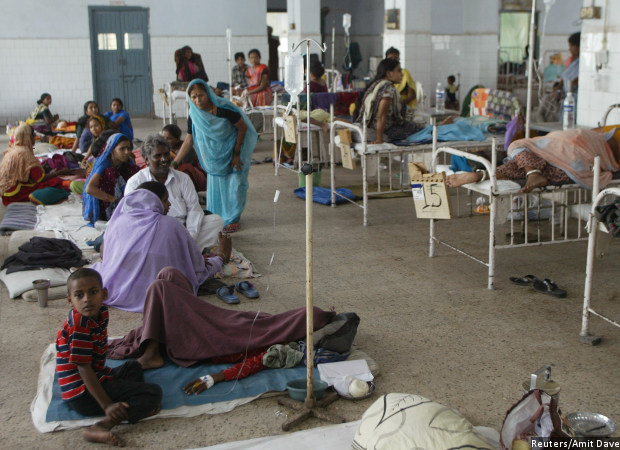In 1 Year, India's TB Deaths Doubled. Here's Why
India had double the number of estimated deaths by tuberculosis (TB) in 2015--480,000 deaths, up from 220,000 deaths in 2014--because previous estimates were too low, according to the World Health Organization’s Global Tuberculosis Report 2016.
India has 27% of the world’s new TB cases--one of the biggest infectious disease killers in India. The country had 2.8 million new TB cases in 2015, up from 2.2 million cases in 2014, according to the WHO report.
As India accounts for a high number of worldwide TB cases, global estimates have also gone up from 9.6 million to 10.4 million, the report said.
India also had a higher estimated number of patients with drug-resistant TB in 2015--79,000, 11% more than the cases in 2014. About 2.5% of new TB cases are resistant to rifampicin, or to both rifampicin and isoniazid--the two most commonly used anti-TB drugs--while 60% of all previously treated TB cases were drug-resistant.
Source: World Health Organization
“The TB epidemic is larger than previously estimated, reflecting new surveillance and survey data from India,” the WHO report said. Evidence of low previous estimates includes “household surveys, a state-wide TB prevalence survey, studies of anti-TB drug sales in the private sector, notification data and new analysis of mortality data”, the report said.
More and more TB cases diagnosed and treated in the private sector have been registered with the government over the last two years. Until 2012, when the government made it mandatory for private doctors to report cases to the government, no government or private agency nationwide tracked how many patients were diagnosed or treated successfully in the private sector. The notification of private sector patients has gone up by nearly four times. India's private sector notified 14.4 cases per 100,000 people in 2015, up from 3.1 in 2013, according to data from India’s national TB program, the Revised National Tuberculosis Program.
The government also has a better estimate of the TB cases in the private sector because of a 2016 study published in the Lancet. The private sector in India treats an estimated 2.2 million TB cases, the study said, based on data from the sale of drugs containing rifampicin, the main anti-TB drug. The study further said that the cases in the private sector could be anything between 1.19 and 5.24 million cases in 2014.
Tuberculosis is a treatable air-borne disease, but TB treatment reaches only 59% of the estimated TB patients in India, the report said.
“The government’s TB program has done a better job than most other countries of the same size and scale of TB,” said Puneet Dewan, a senior program officer for TB at the Bill and Melinda Gates Foundation, a private foundation that also funds TB control programs in India. “But lots of patients are not under the government’s supervised program,” he added.
The 2016 WHO report only calculates the number of new TB cases in 2015, and does not calculate the total number of TB cases (old cases and new), known as the prevalence of TB, because the WHO is awaiting results from the national TB prevalence survey scheduled for 2017-2018, the report said.
Six countries--India, Indonesia, China, Nigeria, Pakistan and South Africa--accounted for 60% of the new TB cases in the world. India, China and the Russian Federation accounted for 45% of multi-drug resistant cases in the world.
(Shah is a reporter/editor with IndiaSpend.)
We welcome feedback. Please write to respond@indiaspend.org. We reserve the right to edit responses for language and grammar.
__________________________________________________________________
“Liked this story? Indiaspend.org is a non-profit, and we depend on readers like you to drive our public-interest journalism efforts. Donate Rs 500; Rs 1,000, Rs 2,000.”



